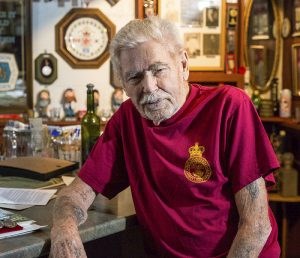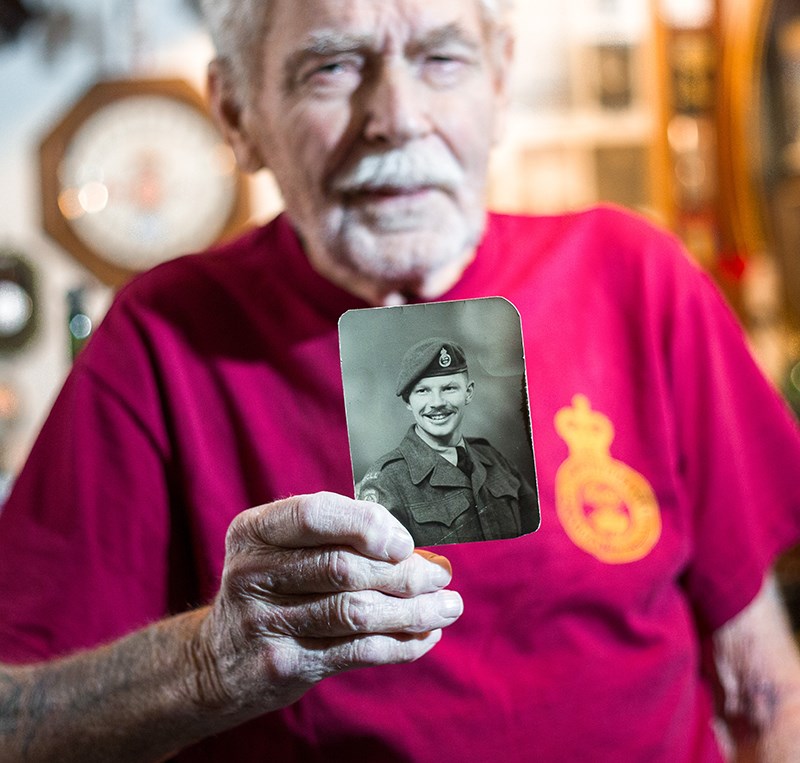Tom St. Amand and Tom Slater
Sarnia’s Bill Oldale remembers his sergeant asking if he were scared.
When the 20-year-old replied yes, the officer nodded.
“Good, you'll be ready, then. Anyone saying they're not frightened is lying.”
It was April 22, 1951 and Private Oldale and 700 other members of the 2nd Battalion of the Princess Patricia's Canadian Light Infantry Regiment (2PPCLI) had reason to be afraid. They were about to face 5,000 Chinese soldiers in one of the Korean War's most decisive battles.
Intent on recapturing Seoul, the Chinese army was advancing south relentlessly and was preparing to march through Kapyong Valley, 60 kilometres northeast of the city.
For two days, the Princess Patricia's had occupied the summit of Hill 677 (its exact height in metres), which overlooked the valley’s north entrance. Opposite them on Hill 504 were the Australians.
Outnumbered five to one, the Canadians and Australians were tasked with halting the Chinese advance.
But numbers weren’t the only problem. Hill 677 was snow-covered and wide and its uneven terrain, marked by gullies and woods, made a co-ordinated defence impossible. It would be every unit for itself.
Oldale said he heard the enemy before he saw them.
"We were hunkered down, waiting in the darkness. They screamed and hollered to signal their approach … it was completely unnerving.”
Waves of enemy soldiers, many armed with Russian sub-machine guns, began attacking the summit. Most of the Canadians were armed with 9-pound single bolt Lee Enfield rifles with an attached bayonet, 200 rounds of ammunition, and a handful of grenades.
They would need them all. The gunfire eventually gave way to hand-to-hand combat, and the fighting was intense and brutal. It was a kill or be killed battlefield.
Running low on ammunition, the Canadians used their bayonets. After that, some used their rifles as baseball bats.
With no ammunition left the Australians retreated on the April 24, but the Canadians held firm.
Just after midnight on the 25th, with hundreds of enemy soldiers just metres from his men, a Canadian officer radioed his position to a New Zealand artillery in the back lines. He ordered his men to find cover and within seconds a barrage of bombs exploded around them. The Canadians reasoned correctly that more soldiers of the larger enemy army would be killed.
It was a decisive strike.

The Chinese army withdrew in the morning and the Canadians, still alert, tended to the wounded and waited for a counter-attack that never came.
By the afternoon of April 25 another United Nations battalion had replaced the Canadians on Hill 677.
The battle claimed an estimated 1,000 Chinese soldiers, yet miraculously only ten members of the Princess Patricia's were killed and 23 injured.
Bill Oldale was home by Christmas of 1952, physically unscathed but temporarily susceptible to nightmares, many of him exhorting “his fellow soldiers to be careful, to watch out.”
Bill married Betty (Fyfe) shortly after, started a family and worked for years as a millwright in Chemical Valley.
The 1951 Battle at Kapyong Hill contributed significantly to the defeat of the Chinese offensive against the South that spring. Although most Canadians have never heard of the battle, the 87-year-old Oldale will never forget it.
“We Canadians were a determined group,” he said. “Simply put, someone in war had to die.”
For its heroic actions, the 2nd Battalion of the Princess Patricia's Canadian Light Infantry Regiment and its support groups became the first and only Canadian unit ever to receive a U.S. Presidential Unit Citation.
